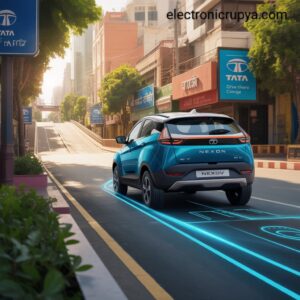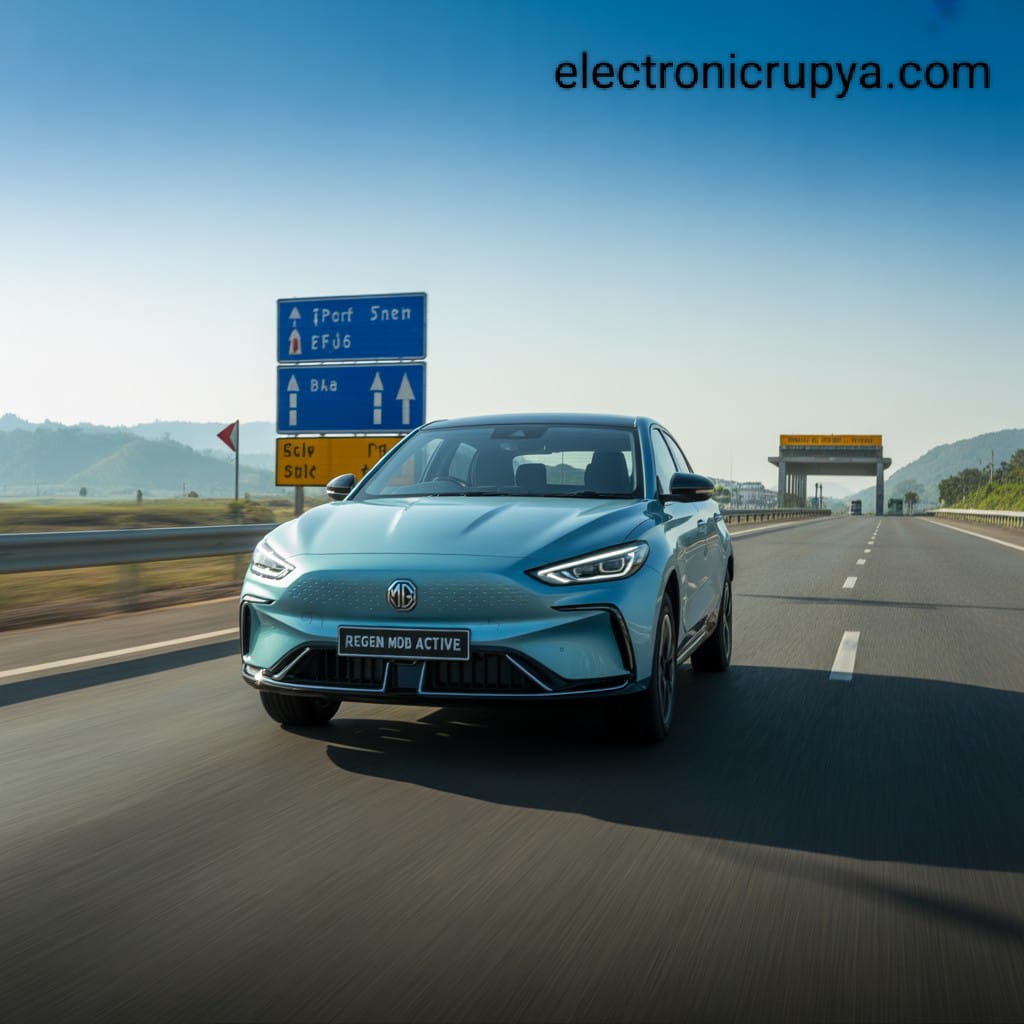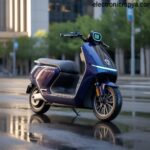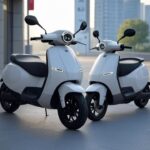INTRODUCTION
Electric vehicles are getting very trendy in India and all around the world. People want cleaner transport, and how electric vehicles come to a halt is quite cool compared to ordinary petrol or diesel vehicles. When you brake an electric vehicle, it not only brings you to a stop – it charges the battery too!
This intelligent feature goes by the name of regenerative braking, and it’s one of the best things about electric driving. Not only does it get your car to go further on a single battery, but it also makes the entire driving experience smoother and smarter.
What I’ll do in this article is to dissect what regenerative braking is, how electric cars achieve it, why it’s such a great tool, and why it’s such a game-changer for electrics.
1. What Is Regenerative Braking?

Regenerative braking, or “regen braking,” is the process of bringing the vehicle to a stop while converting the motion of the vehicle (kinetic energy) into stored energy within the battery.
In a conventional petrol or diesel car, whenever you brake, that energy is wasted as heat in the form of friction. But in an EV, regen braking captures some of this waste energy and uses it to charge the battery. So EVs recycle energy, not waste energy.
How Regenerative Braking Works?
Electric vehicles employ electric motors. Not only will the motors drive the wheels forward, but they will reverse as well — as will a generator.
This is the process of regenerative braking in steps:
Driving Normally:
When you press the accelerator, electricity is channeled from the battery to the motor, which turns the wheels.
Decreasing speed or stopping:
When you lift your foot from the gas pedal or press the brake pedal softly, the motor does the opposite. It begins running in the opposite direction and slows down the vehicle.
Energy Conversion:
When the motor winds down, it resists the rotation of the wheels and converts the kinetic energy of motion into electricity.
Battery Recharge:
That the power is recycled back to the battery and saved for later use.
The more intense the regen braking, the more power is recaptured. With certain EVs, you can even select how much power this braking can have.
Types of Regenerative Braking in EVs
1. Regenerative braking when decelerating
This comes into action when the driver merely removes their foot from the accelerator. Thevehicle automatically brakes by means of the motor, without touching the brakes.
2. Regenerative Braking during Braking
Here, upon the driver’s application of the brake pedal, the system slows the vehicle down using regen braking first. Only when more braking force is needed are the conventional mechanical brakes (disc brakes) applied.
Benefits of Regenerative Braking
Regenerative braking is not just a clever trick — it is a genuine benefit for EV drivers:
1. Enhanced Efficiency
Regen braking conserves energy that would otherwise be lost. This increases the car’s overall driving range, i.e., you can drive farther without needing to recharge.
2. Less Wear on the Brake Pads
Since the motor is helping to slow the automobile, the regular friction brakes are not utilized as frequently. This reduces the wear and tear on the brake pads, which is cost-saving and also extends the life of the vehicle.
3.Smoother Driving
Most drivers find regen braking gives them smoother control, especially in city traffic where you are constantly stopping and going.
4.Supports Traffic and Downhill Driving
Regen braking helps to control speed on descent, and during stop-start driving, it saves energy and reduces the number of brakes.
Limitations of Regenerative Braking
While regenerative braking is a great feature, it does have some drawbacks:
1.Restricted Energy Recovery
Regen braking only recovers some of the energy. Regen braking is never a
replacement for charging, and driving and terrain will affect performance.
2.Less Effective at Full Battery
In case your battery is at full capacity, there is no storage space for extra energy. Regen braking will, therefore, not function in that case, and the vehicle will use normal brakes.
3.Drivers’ Learning Curve
New users of EVs will need some time to get used to the manner in which the vehicle slows down with regen braking. It is slightly different from traditional petrol or diesel vehicles.
Conclusion
Electric vehicles aren’t just changing the way we get around — they’re changing the way we brake too. Regenerative braking is pure genius engineering that saves energy, wears out brakes less, and makes EVs smarter and more efficient.
As Indians get more used to driving EVs, it becomes essential to have an understanding of how these systems work. Regenerative braking is one such behind-the-scenes silent hero that works
quietly behind the scenes to give you more range, better safety, and more control.
The next time you’re a passenger in an electric vehicle, notice how smoothly it slows down — and remember, that smooth slowdown is your car recharging its batteries quietly.







2 thoughts on “How Regenerative Braking Works in Electric Cars-2025”